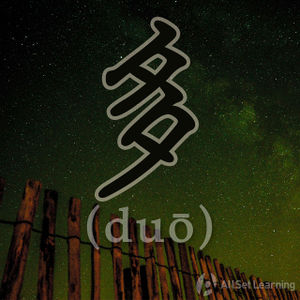Difference between revisions of "Doing something more with "duo""
ViktorMugli (talk | contribs) |
|||
| Line 1: | Line 1: | ||
| + | {{Grammar Box}} | ||
| + | |||
== Structure == | == Structure == | ||
| Line 22: | Line 24: | ||
==See also== | ==See also== | ||
| − | + | {{Similar|Doing something less with "shao"}} | |
| − | + | {{Similar|Intensifying with "duo"}} | |
| − | + | {{Similar|Asking about degree with "duo"}} | |
== Sources and further reading == | == Sources and further reading == | ||
| Line 35: | Line 37: | ||
[[Category:B1 grammar points]] | [[Category:B1 grammar points]] | ||
| + | |||
| + | {{Basic Grammar|多|B1|多 + V|<em>多</em> 吃 点。|grammar point|ASGLKGZP}} | ||
Revision as of 06:04, 13 June 2012
-
Level
-
Similar to
-
Used for
-
Keywords
Structure
To talk about doing something more, 多 (duō) is often used. It even rhymes!
Subject + 多 + Verb + Object
When this structure is used as a command, the subject is usually omitted.
Examples
- 多 吃 点。
- 多 喝 啤酒 吧!
- 我 应该 多 运动。
See also
Sources and further reading
Books
- Integrated Chinese: Level 1, Part 2 (pp. 39) →buy
- 发展汉语 中级汉语口语上 (pp. 72)



